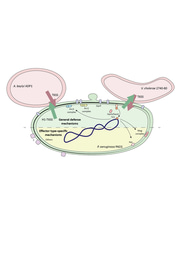Tolerance to ambiguous uncertainty increases prosocial behavior
Published in Social Sciences
Situations like these are fraught with uncertainty. Every time we engage with another person, whether a stranger or a spouse, we can’t be 100% sure what the other person is thinking or feeling. That’s because people rarely expose their intentions in their entirety. Even if they claim to (your spouse swears he isn’t angry but his cold shoulder suggests otherwise), you can never be sure you have unfettered access to another person’s thoughts, feelings or beliefs. When perceived through this lens, nearly every human interaction comes with some level of uncertainty. This propelled me and my co-author, Marc-Lluís Vives, to wonder how people’s attitudes about uncertainty might shape their willingness to engage with others.
But let’s back up. Although I’m a social neuroscientist, I was academically raised, in part, by neuroeconomists. This led me down one of the most traversed research paths in economics: trying to understand decision-making under uncertainty. If you open any economics textbook or journal you’re apt to find numerous references to decision-making under uncertainty. The scientific quest to understand how uncertainty influences choice has been going strong for centuries, dating as far back as Daniel Bernoulli, the 1800’s mathematician who famously argued that people are risk averse.
Consider the classic urn test. An urn is filled with some mixture of red and blue balls. You’re tasked with figuring out whether the next ball that’s drawn will be red. If you guess correctly, you win some money, otherwise you lose money. When the urn is transparent, you likely feel you can make a fairly informed estimate of the probabilities of pulling a red ball. Knowing the probability of a certain outcome ––pulling a red ball––is referred to as ‘risky’ uncertainty. Now imagine the urn is copper and you can’t see what’s inside. If you’re asked to guess whether the next ball pulled will be red, estimating becomes much harder. In this case, you’re being asked to assess an outcome’s probability of an outcome without knowing the odds. This is referred to as ‘ambiguous’ uncertainty.
Decades ago, when researchers began exploring whether there was a link between uncertainty and decisions made in social settings, they examined the psychological construct of risk, unearthing little. At first blush this might seem surprising. However, if we return to our blind date, and are trying to figure out whether Alex likes cats, or better yet, is enjoying himself, we would be facing ambiguous uncertainty. We don’t know the odds of Alex liking cats (or for that matter, the date).
Indeed, if you think about all the social interactions that already unfolded today––Was that stranger on the subway making eyes at you? What was your boss really trying to tell you? Was your daughter mad when she quickly got off the phone?––how many did you know the outcome’s probability? Although we sometimes can attempt decent estimates––the stranger likely wasn’t making eyes at me but my teenage daughter is likely mad at me––these estimates are still made without knowing the associated probabilities. In other words, our social worlds are rife with ambiguous uncertainty.
Marc and I began to think about how attitudes towards uncertainty might influence how people engage with others. Based on the economic literature, that those who can tolerate ambiguous uncertainty are more optimistic that events will fall in their favor, we wondered whether people who tolerate ambiguity are more willing to take the risk of cooperating or trusting others. Think about it this way: If ambiguous uncertainty doesn’t bother me, then I may be more willing to place my own welfare into another’s hands, a prerequisite for many prosocial behaviors like trust and cooperation.
As someone who regularly borrows methodologies from other fields, I figured this experiment was particularly suitable for co-opting an economist’s toolkit. By having our subjects play a classic ‘urn’ test, we could apply a computational model to estimate their attitudes towards both types of uncertainty, which would give us an idea of how each person deals with both risky and ambiguous uncertainty. We could then explore the subjects’ behavior in a series of social tasks and see if there was a relationship between attitudes towards uncertainty and willingness to be prosocial.
Rather than rely on self-report data, Marc and I liked the idea that we could use people’s behavior in an independent (and well-vetted) task to assess their uncertainty attitudes, and then explore whether that behavior would predict their willingness to trust or cooperate with another person. By marrying behavioral economics with game theory, we identified that a person’s attitude toward ambiguous uncertainty is a unique predictor of prosocial actions.
As psychologists, our challenge is to identify the mechanisms and motivations behind human behavior. To do so, we leveraged a traditional economic approach, demonstrating how tolerating uncertainty is a critical part of prosocial behavior. Ultimately, the power of such an interdisciplinary approach rests in its ability to reveal how a simple concept, in this case ‘tolerance for uncertainty’, can lie at the heart of prosocial behavior.
The paper in Nature Communications is here: https://go.nature.com/2xcJVO8
Follow the Topic
-
Nature Communications

An open access, multidisciplinary journal dedicated to publishing high-quality research in all areas of the biological, health, physical, chemical and Earth sciences.
Related Collections
With Collections, you can get published faster and increase your visibility.
Women's Health
Publishing Model: Hybrid
Deadline: Ongoing
Advances in neurodegenerative diseases
Publishing Model: Hybrid
Deadline: Dec 24, 2025




Please sign in or register for FREE
If you are a registered user on Research Communities by Springer Nature, please sign in